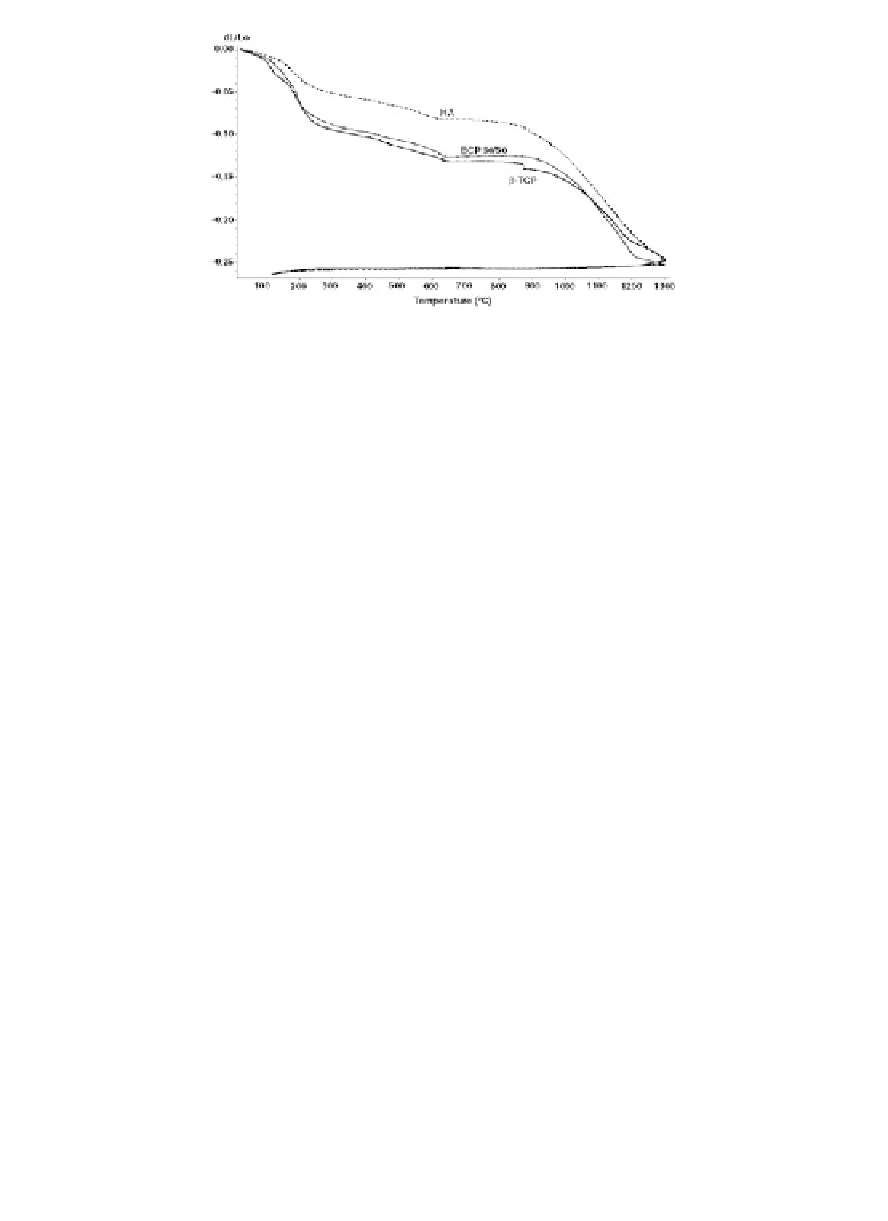Biomedical Engineering Reference
In-Depth Information
Figure 4.4
Linear shrinkage of the compacted ACP powders that were
converted into β-TCP, BCP (50% HA + 50% β-TCP) and HA upon
heating. According to the authors: “At 1300°C, the shrinkage
reached a maximum of approximately ~25, ~30 and ~35%
for the compacted ACP powders that converted into HA, BCP
50/50 and β-TCP, respectively” [243]. Reprinted from Ref.
[243] with permission.
An extensive study on the effects of sintering temperature and
time on the properties of HA bioceramics revealed a correlation
between these parameters and density, porosity, grain size, chemical
composition and strength of the scaffolds [256]. Namely, sintering
below ~1000°C was found to result in initial particle coalescence,
with little or no densification and a significant loss of the surface
area and porosity. The degree of densification appeared to depend on
the sintering temperature whereas the degree of ionic diffusion was
governed by the period of sintering [256]. To enhance sinterability
of calcium orthophosphates, a variety of sintering additives might be
added [257-260].
HA powders can be pressurelessly sintered up to the theoretical
density at 1000-1200°C. Processing at higher temperatures may
lead to exaggerated grain growth and decomposition because HA
becomes unstable at temperatures exceeding ~1300°C [64, 86,
145-151, 261]. The decomposition temperature of HA bioceramics
is a function of the partial pressure of water vapor. Moreover,
processing under vacuum leads to an earlier decomposition of HA,
while processing under high partial pressure of water prevents from
the decomposition. On the other hand, a presence of water in the
sintering atmosphere was reported to inhibit densification of HA and
accelerated grain growth [233, 262]. Unexpectedly, but application

Search WWH ::

Custom Search